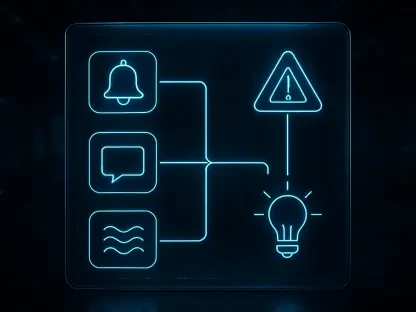The landscape of software supply chain security has dramatically evolved in recent years. Despite a series of high-profile security breaches and the subsequent regulatory steps taken by the Biden administration, vulnerabilities continue to pose significant risks. These developments highlight the ongoing struggle organizations face in securing their software supply chains. In this article, we’ll delve into the complexities of this issue, examining historical incidents, recent governmental interventions, and the expert consensus on current challenges and future expectations.
The Persistent Threat of Software Supply Chain Attacks
The software supply chain has been a significant target for cyberattacks, with incidents like the backdoor discovered in the XZ Utils tool by Microsoft developer Andres Freund underscoring this reality. This threat is not new; the notorious SolarWinds attack served as a stark reminder of the pervasive vulnerabilities in the software supply chain. These incidents reveal that despite increased awareness and efforts to reinforce security, malicious actors continue to exploit weaknesses effectively.Historical breaches have revealed the ease with which attackers can infiltrate supply chains, often through seemingly innocuous tools and updates. The SolarWinds attack, in particular, demonstrated how a single compromised vendor could provide attackers with access to numerous high-profile targets, including government agencies and major corporations. This ongoing threat landscape necessitates robust interventions and proactive measures from both the public and private sectors. Furthermore, the consistent targeting of software supply chains reflects the lucrative and strategic value for cybercriminals, posing a perpetual challenge for cybersecurity teams.
Governmental Interventions Under the Biden Administration
In response to these escalating threats, the Biden administration has enacted a series of comprehensive cybersecurity measures aimed at fortifying the software supply chain. A prominent initiative is the cybersecurity executive order, which mandates various government agencies to collaborate on developing and implementing new tools, standards, and procedures to bolster security. This initiative underscores a concerted effort to create a more resilient infrastructure that can better withstand the increasing sophistication of cyberattacks.The executive order outlines several critical directives, including the integration of a Software Bill of Materials (SBOM) for federal agencies and contractors. The aim is to enhance transparency and accountability in the software development lifecycle, ensuring that any vulnerabilities in third-party components are promptly identified and addressed. Additionally, the National Institute of Standards and Technology (NIST) has been tasked with creating updated guidelines and frameworks to improve software supply chain security. These initiatives represent a significant governmental push toward embedding security measures at every stage of software development and deployment.
Efficacy and Limitations of Current Measures
While these governmental interventions represent significant progress, the efficacy of such measures remains subject to several limitations. One primary challenge is the sheer complexity and magnitude of the software supply chain, which comprises numerous interconnected components and vendors. This complexity often makes it difficult to enforce comprehensive security standards across all levels of the supply chain. Moreover, the dynamic nature of software development and the continuously evolving threat landscape further complicate the implementation of static security measures.Another critical concern is the lack of clear definitions and regulatory reach, particularly concerning open-source software. Open-source components form a substantial part of most software products, yet they often lack accountability mechanisms. This gap poses a substantial risk, as vulnerabilities in open-source software can be exploited on a large scale, affecting numerous downstream products and services. The dispersed nature of open-source development means that identifying and addressing security flaws require coordinated effort and dedicated resources, which are often limited.
The Role and Critique of SBOMs
The concept of SBOMs has gained traction as a potential solution for enhancing software supply chain transparency. An SBOM essentially catalogues the various components used in a software product, providing a detailed inventory that facilitates the identification and management of vulnerabilities. Despite their theoretical benefits, experts argue that the real-world application of SBOMs is still in its nascent stages and that their effectiveness is limited without robust underlying asset management practices. Ensuring that SBOMs are kept up to date and accurately reflect the current state of the software requires significant effort and continuous oversight.Critics also point to the over-reliance on SBOMs as a silver bullet for supply chain security. While they are a valuable tool, SBOMs alone cannot address all the nuances and complexities of supply chain risks. Effective implementation requires a holistic approach, integrating SBOMs with other security measures and fostering a culture of continuous monitoring and proactive risk management. Additionally, SBOMs must be complemented by comprehensive vulnerability management processes and real-time threat intelligence to identify and mitigate emerging risks promptly.
Challenges in Open-source Software Management
Open-source software presents a unique set of challenges for supply chain security. Given its widespread use and collaborative development model, ensuring the security of open-source components is inherently complex. Unlike proprietary software, open-source projects often lack formalized accountability structures, making it difficult to enforce consistent security standards. The collaborative nature of these projects can lead to variations in coding practices and security maturity levels among contributors, creating potential vulnerabilities.Furthermore, the communal nature of open-source software can sometimes lead to a diffusion of responsibility. With numerous contributors involved in the development process, identifying and remediating vulnerabilities can be a slow and cumbersome process. This scenario exacerbates the risk of open-source software being targeted and exploited by malicious actors, necessitating dedicated efforts to enhance its security posture. Organizations need to adopt rigorous vetting processes and continuous monitoring to ensure that open-source components meet their security requirements.
Expert Insights and Future Directions
The landscape of software supply chain security has undergone significant changes in recent years. Despite numerous high-profile security breaches and subsequent regulatory measures implemented by the Biden administration, vulnerabilities continue to present major risks. These developments underscore the persistent challenges organizations encounter in securing their software supply chains.In this discussion, we will explore the multifaceted nature of this issue. We will review historical incidents that have shaped the current security landscape and investigate recent governmental interventions aimed at mitigating risks. Additionally, we will consider the expert consensus on present challenges and projections for the future.Throughout history, various cyberattacks have underscored the complexity and difficulty of safeguarding software supply chains. Notable breaches have served as wake-up calls, prompting governmental bodies to craft regulations intended to bolster security. The Biden administration has been particularly proactive in this regard, enacting policies aimed at shoring up defenses. However, even with these advancements, vulnerabilities still remain a pressing problem.Experts agree that a combination of proactive measures, technological advancements, and regulatory oversight is essential for mitigating risks in software supply chains. Looking ahead, the most successful strategies will likely involve a blend of these elements to create a more secure landscape for organizations worldwide.









